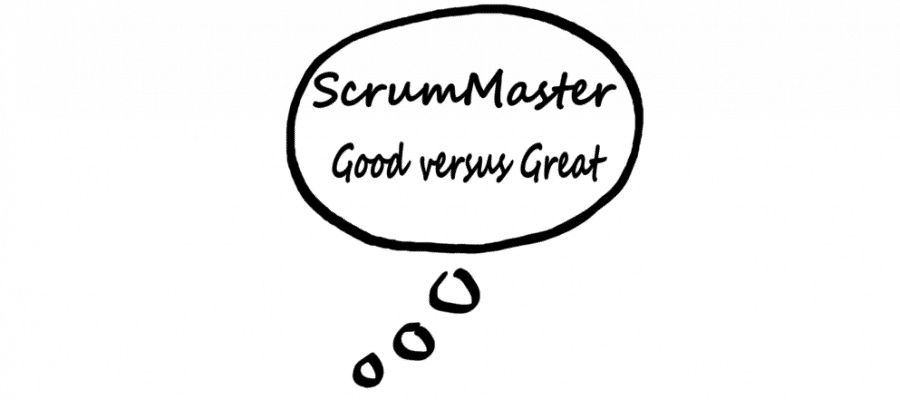Good Scrum Master versus Great Scrum Master

The Scrum Master job can be challenging and full of responsibilities. But at the same time, it is exciting and full of learning. The way a Scrum Master thinks or works can directly impact the performance of the Scrum teams and in turn the entire organization.
If you are an aspiring Scrum Master or already one, it is not just sufficient to be a good Scrum Master performing your responsibilities as laid out in the Scrum Guide but go beyond - performing beyond the definition. This is about the pursuit to become a great Scrum Master and focus on continuous improvement of the Scrum Team. The statement might seem confusing. But understanding the difference between a good Scrum Master and a great Scrum Master is critical to the success of the role and eventually of the organization too.
So, what's the difference between a good Scrum Master and great Scrum Master? Let's find out.
First, let us explore what are the responsibilities of a Scrum Master.
The role of a Scrum Master
A Scrum Master is a servant leader for the Scrum Team; and helps to promote and support Scrum across the organization. A Scrum Master makes sure the team not only understands the Agile values and principles but also imbibes such a thinking. The Scrum Master role was created as a part of the Scrum framework and indicates someone who is an expert in Scrum.
What is Servant Leadership?
Servant leadership is a leadership philosophy in which the leader serves. Unlike traditional leadership, where the primary goal of the leader is to focus only on the success of the organization, a servant leader shares power, decision making, the needs and requirements of the employees, and helps them perform as a high-productive team.
Servant Leadership means leading the Scrum Team by serving them - removing high-priority blockers.
Leadership is no longer a given authority but provided as a service. A Scrum Master role is not performed as 'command and control' leadership but by 'empowering and enabling' teams. Scrum Master role is to improve the efficiency of Development Team, Product Owner, other Scrum Teams and, in fact the entire organization. The main focus of a Scrum Master is to enable an open mindset among various roles, units and leaders.
Key responsibilities of a Scrum Master:
- Coaching and Mentoring.
- Removing roadblocks.
- Addressing team dynamics.
- Teach Scrum.
- Facilitate Scrum Events.
- Timeboxing Scrum Events.
- Ensuring a fruitful relationship between the Product Owner, Development Team, and others outside the team. Reducing conflicts, and promote continuous improvement.
- Establishing an environment where the Scrum Team can be productive and efficient.
- Protecting the Development Team from outside distractions and interruptions.
- Performing the above responsibilities, will probably make a good Scrum Master. Going beyond the responsibilities is about becoming a great Scrum Master.
Good versus Great
Good Scrum Master | Great Scrum Master |
| Removes the impediments faced by the Development Team on a timely basis. | Empowers the Development Team to remove the impediments by themselves, thereby making them more efficient. |
| Step-in: Steps into every situation to help the Development Team. | Step-back: Takes a step back to let the Development Team solve their problems until the 'last responsible moment'. |
| Updates the status boards and burn-down charts regularly, tracks the progress closely. | Coaches the Development Team to help them understand the importance of visual tracking, and innovate more fun ways to manage themselves. |
| Helps each team member to build extraordinary skills and excel in their own roles. | Helps the entire team to drive cross-functional behaviour where they don't depend on outside teams for skills. |
| Good listener: Listens to what is said. | Great listener: Able to listen what is not said. And able to understand the room's atmosphere even before a single word is uttered by a team member. |
| Provides regular updates to the Product Owner about the Development Team's progress and impediments. | Connects the Development Team and Product Owner so that a direct communication channel is open for communication. Reduces gaps, fosters better collaboration. |
| Minimizes stakeholder interferences within the Development Team's work, thus help increasing the focus. | Instils courage within the Development Team to discuss with users and stakeholders directly, and able to say 'No' when required. |
| Insists the Scrum Team about success. | Allows the Scrum Team to experiment, and encourages failure as an important stepping stone towards success. |
| Moulds the team as per the existing organization's culture. | Challenges the organization's culture, and able to transform eventually. |
References
- www.agilemanifesto.org
- Scrum Guide from www.ScrumGuides.org
- https://agilepainrelief.com/blog/scrum-by-example.html
- https://www.beyond20.com/blog/scrum-in-the-real-world/
- https://inspectandadapt.com/wp-content/uploads/2017/06/Good_Great_Overview.pdf



